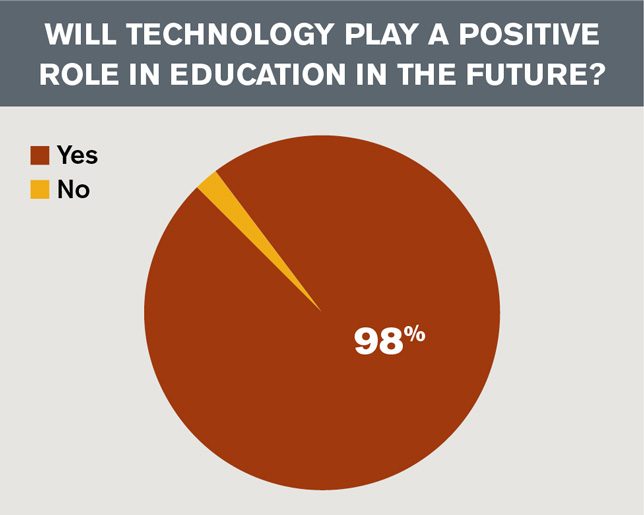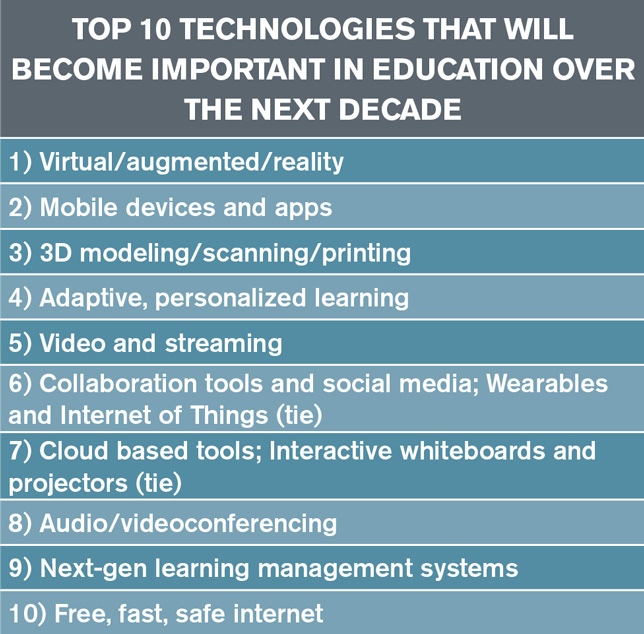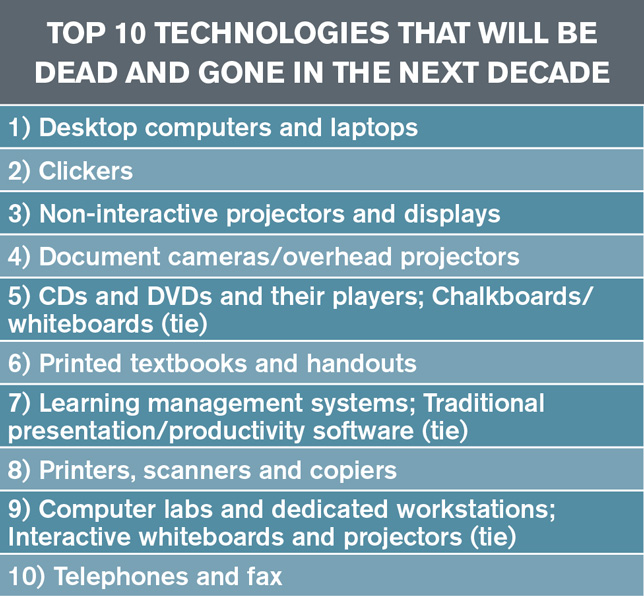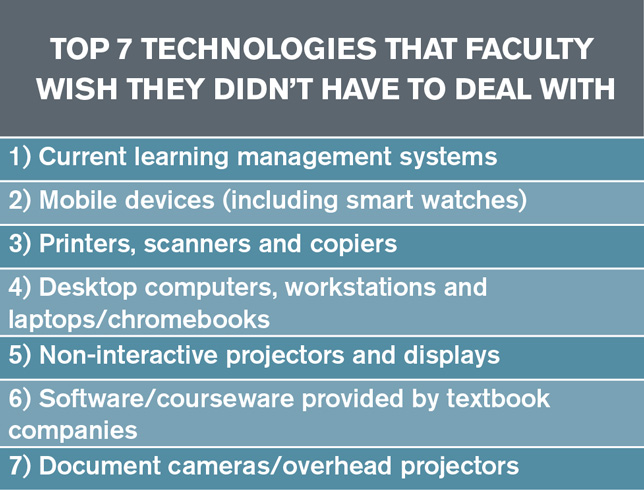Giving Classroom Experiences (Like VR) More … Dimension
https://www.insidehighered.com/digital-learning/article/2018/11/02/virtual-reality-other-3-d-tools-enhance-classroom-experiences
at a session on the umbrella concept of “mixed reality” (abbreviated XR) here Thursday, attendees had some questions for the panel’s VR/AR/XR evangelists: Can these tools help students learn? Can institutions with limited budgets pull off ambitious projects? Can skeptical faculty members be convinced to experiment with unfamiliar technology?
All four — one each from Florida International University, Hamilton College, Syracuse University and Yale University — have just finished the first year of a joint research project commissioned by Educause and sponsored by Hewlett-Packard to investigate the potential for immersive technology to supplement and even transform classroom experiences.
Campus of the Future” report, written by Jeffrey Pomerantz
Yale has landed on a “hub model” for project development — instructors propose projects and partner with students with technological capabilities to tap into a centralized pool of equipment and funding. (My note: this is what I suggest in my Chapter 2 of Arnheim, Eliot & Rose (2012) Lib Guides)
Several panelists said they had already been getting started on mixed reality initiatives prior to the infusion of support from Educause and HP, which helped them settle on a direction
While 3-D printing might seem to lend itself more naturally to the hard sciences, Yale’s humanities departments have cottoned to the technology as a portal to answering tough philosophical questions.
institutions would be better served forgoing an early investment in hardware and instead gravitating toward free online products like Unity, Organon and You by Sharecare, all of which allow users to create 3-D experiences from their desktop computers.
+++++++++
Campus of the Future” report, written by Jeffrey Pomerantz
https://library.educause.edu/~/media/files/library/2018/8/ers1805.pdf?la=en
XR technologies encompassing 3D simulations, modeling, and production.
This project sought to identify
- current innovative uses of these 3D technologies,
- how these uses are currently impacting teaching and learning, and
- what this information can tell us about possible future uses for these technologies in higher education.
p. 5 Extended reality (XR) technologies, which encompass virtual reality (VR) and augmented reality (AR), are already having a dramatic impact on pedagogy in higher education. XR is a general term that covers a wide range of technologies along a continuum, with the real world at one end and fully immersive simulations at the other.
p. 6The Campus of the Future project was an exploratory evaluation of 3D technologies for instruction and research in higher education: VR, AR, 3D scanning, and 3D printing. The project sought to identify interesting and novel uses of 3D technology
p. 7 HP would provide the hardware, and EDUCAUSE would provide the methodological expertise to conduct an evaluation research project investigating the potential uses of 3D technologies in higher education learning and research.
The institutions that participated in the Campus of the Future project were selected because they were already on the cutting edge of integrating 3D technology into pedagogy. These institutions were therefore not representative, nor were they intended to be representative, of the state of higher education in the United States. These institutions were selected precisely because they already had a set of use cases for 3D technology available for study
p. 9 At some institutions, the group participating in the project was an academic unit (e.g., the Newhouse School of Communications at Syracuse University; the Graduate School of Education at Harvard University). At these institutions, the 3D technology provided by HP was deployed for use more or less exclusively by students and faculty affiliated with the particular academic unit.
p. 10 definitions
there is not universal agreement on the definitions of these
terms or on the scope of these technologies. Also, all of these technologies
currently exist in an active marketplace and, as in many rapidly changing markets, there is a tendency for companies to invent neologisms around 3D technology.
A 3D scanner is not a single device but rather a combination of hardware and
software. There are generally two pieces of hardware: a laser scanner and a digital
camera. The laser scanner bounces laser beams off the surface of an object to
determine its shape and contours.
p. 11 definitions
Virtual reality means that the wearer is completely immersed in a computer
simulation. Several types of VR headsets are currently available, but all involve
a lightweight helmet with a display in front of the eyes (see figure 2). In some
cases, this display may simply be a smartphone (e.g., Google Cardboard); in other
cases, two displays—one for each eye—are integrated into the headset (e.g., HTC
Vive). Most commercially available VR rigs also include handheld controllers
that enable the user to interact with the simulation by moving the controllers
in space and clicking on finger triggers or buttons.
p. 12 definitions
Augmented reality provides an “overlay” of some type over the real world through
the use of a headset or even a smartphone.
In an active technology marketplace, there is a tendency for new terms to be
invented rapidly and for existing terms to be used loosely. This is currently
happening in the VR and AR market space. The HP VR rig and the HTC Vive
unit are marketed as being immersive, meaning that the user is fully immersed in
a simulation—virtual reality. Many currently available AR headsets, however, are
marketed not as AR but rather as MR (mixed reality). These MR headsets have a
display in front of the eyes as well as a pair of front-mounted cameras; they are
therefore capable of supporting both VR and AR functionality.
p. 13 Implementation
Technical difficulties.
Technical issues can generally be divided into two broad categories: hardware
problems and software problems. There is, of course, a common third category:
human error.
p. 15 the technology learning curve
The well-known diffusion of innovations theoretical framework articulates five
adopter categories: innovators, early adopters, early majority, late majority, and
laggards. Everett M. Rogers, Diffusion of Innovations, 5th ed. (New York: Simon and Schuster, 2003).
It is also likely that staff in the campus IT unit or center for teaching and learning already know who (at least some of) these individuals are, since such faculty members are likely to already have had contact with these campus units.
Students may of course also be innovators and early adopters, and in fact
several participating institutions found that some of the most creative uses of 3D technology arose from student projects
p. 30 Zeynep Tufekci, in her book Twitter and Tear Gas
definition: There is no necessary distinction between AR and VR; indeed, much research
on the subject is based on a conception of a “virtuality continuum” from entirely
real to entirely virtual, where AR lies somewhere between those ends of the
spectrum. Paul Milgram and Fumio Kishino, “A Taxonomy of Mixed Reality Visual Displays,” IEICE Transactions on Information Systems, vol. E77-D, no. 12 (1994); Steve Mann, “Through the Glass, Lightly,” IEEE Technology and Society Magazine 31, no. 3 (2012): 10–14.
For the future of 3D technology in higher education to be realized, that
technology must become as much a part of higher education as any technology:
the learning management system (LMS), the projector, the classroom. New
technologies and practices generally enter institutions of higher education as
initiatives. Several active learning classroom initiatives are currently under
way,36 for example, as well as a multi-institution open educational resources
(OER) degree initiative.37
p. 32 Storytelling
Some scholars have argued that all human communication
is based on storytelling;41 certainly advertisers have long recognized that
storytelling makes for effective persuasion,42 and a growing body of research
shows that narrative is effective for teaching even topics that are not generally
thought of as having a natural story, for example, in the sciences.43
p. 33 accessibility
The experience of Gallaudet University highlights one of the most important
areas for development in 3D technology: accessibility for users with disabilities.
p. 34 instructional design
For that to be the case, 3D technologies must be incorporated into the
instructional design process for building and redesigning courses. And for that
to be the case, it is necessary for faculty and instructional designers to be familiar
with the capabilities of 3D technologies. And for that to be the case, it may
not be necessary but would certainly be helpful for instructional designers to
collaborate closely with the staff in campus IT units who support and maintain
this hardware.
Every institution of higher
education has a slightly different organizational structure, of course, but these
two campus units are often siloed. This siloing may lead to considerable friction
in conducting the most basic organizational tasks, such as setting up meetings
and apportioning responsibilities for shared tasks. Nevertheless, IT units and
centers for teaching and learning are almost compelled to collaborate in order
to support faculty who want to integrate 3D technology into their teaching. It
is necessary to bring the instructional design expertise of a center for teaching
and learning to bear on integrating 3D technology into an instructor’s teaching (My note: and where does this place SCSU?) Therefore,
one of the most critical areas in which IT units and centers for teaching and
learning can collaborate is in assisting instructors to develop this integration
and to develop learning objects that use 3D technology. p. 35 For 3D technology to really gain traction in higher education, it will need to be easier for instructors to deploy without such a large support team.
p. 35 Sites such as Thingiverse, Sketchfab, and Google Poly are libraries of freely
available, user-created 3D models.
ClassVR is a tool that enables the simultaneous delivery of a simulation to
multiple headsets, though the simulation itself may still be single-user.
p. 37 data management:
An institutional repository is a collection of an institution’s intellectual output, often consisting of preprint journal articles and conference papers and the data sets behind them.49 An
institutional repository is often maintained by either the library or a partnership
between the library and the campus IT unit. An institutional repository therefore has the advantage of the long-term curatorial approach of librarianship combined with the systematic backup management of the IT unit. (My note: leaves me wonder where does this put SCSU)
Sharing data sets is critical for collaboration and increasingly the default for
scholarship. Data is as much a product of scholarship as publications, and there
is a growing sentiment among scholars that it should therefore be made public.50
++++++++
more on VR in this IMS blog
https://blog.stcloudstate.edu/ims?s=virtual+reality+definition
Video skills are a valuable gateway to digital literacy
Learning to use the equipment and produce content helps students view the media they consume through a more critical lens
In a world of digital consumption, teaching students how to create what they see, hear and watch is like teaching them the secrets behind a magic trick. Students often spend hours weekly on digital devices, reading stories or looking at images, GIFs and video. They consume vast amounts of digital media without often understanding how it’s created.
Bradley has been teaching the video production class since 2005 as its regional occupational program (ROP) instructor for the Graphic Communications, Video Production, and Computer Animation and Modeling courses. Besides helping students develop technical skills, he also infuses his classes with classic film screenings. Students might come to class and watch “Fantasia,” “High Noon,” “Metropolis” and “Dr. Strangelove,” he says.
He also assigns students work that has a specific focus in mind and brings in local experts to help them learn more about a subject before they create.
++++++++++++
more on digital literacy in this IMS blog
https://blog.stcloudstate.edu/ims?s=digital+literacy
LITA discussions on vendors for VR in academia
At WMU, the Libraries is partnering with our central OIT to host a VR lab in the main library. My partnering co-director, Kevin, is really the subject matter expert but I’m managing a lot of the day-to-day operations. Kevin is programming and experimenting with all kinds of hardware but we decided to use Oculus Rifts in our lab primarily because of the greater durability of the hand controllers (compared especially to the Vive). We’re getting all of our games through the Oculus store and have plans to expand into Steam or another provider but haven’t done so yet. We currently have 40+ titles available for gaming and educational purposes. We also teach content creation using Unity, Maya, Blender, and a handful of other tools.
https://wmich.edu/vr and https://wmich.edu/library/services/vr
Happy to provide more information but hopefully this gives you a good start.
Best wishes,
Scooter
Scott Russell, Director of IT Services
University Libraries, Western Michigan University
+++++++++++++
more on VR in this IMS blog
https://blog.stcloudstate.edu/ims?s=virtual+reality
What Happens to Student Data Privacy When Chinese Firms Acquire U.S. Edtech Companies?
https://www.edsurge.com/news/2018-04-24-what-happens-to-student-data-privacy-when-chinese-firms-acquire-u-s-edtech-companies
Between the creation of a social rating system and street cameras with facial recognition capabilities, technology reports coming out of China have raised serious concerns for privacy advocates. These concerns are only heightened as Chinese investors turn their attention to the United States education technology space acquiring companies with millions of public school users.
A particularly notable deal this year centers on Edmodo, a cross between a social networking platform and a learning management system for schools that boasts having upwards of 90 million users. Net Dragon, a Chinese gaming company that is building a significant education division, bought Edmodo for a combination of cash and equity valued at $137.5 million earlier this month.
Edmodo began shifting to an advertising model last year, after years of struggling to generate revenue. This has left critics wondering why the Chinese firm chose to acquire Edmodo at such a price, some have gone as far as to call the move a data grab.
as data becomes a tool that governments such as Russia and China could use to influence voting systems or induce citizens into espionage, more legislators are turning their attention to the acquisitions of early-stage technology startups.
NetDragon officials, however, say they have no interest in these types of activities. Their main goal in acquiring United States edtech companies lies in building profitability, says Pep So, NetDragon’s Director of Corporate Development.
In 2015, the firm acquired the education technology platform, Promethean, a company that creates interactive displays for schools. NetDragon executives say that the Edmodo acquisition rounds out their education product portfolio—meaning the company will have tools for supporting multiple aspects of learning including; preparation, instructional delivery, homework, assignment grading, communication with parents students and teachers and a content marketplace.
NetDragon’s monetization plan for Edmodo focuses on building out content that gets sold via its platform. Similar to tools like TeachersPayTeachers, So hopes to see users putting up content on the platform’s marketplace, some free and others for a fee (including some virtual reality content), so that the community can buy, sell and review available educational tools.
As far as data privacy is concerned, So notes that NetDragon is still learning what it can and cannot do. He noted that the company will comply with Children’s Online Privacy Protection Act (COPPA), a federal regulation created in order to protect the privacy of children online, but says that the rules and regulations surrounding the law are confusing for all actors involved.
Historically, Chinese companies have faced trust and branding issues when moving into the United States market, and the reverse is also true for U.S. companies seeking to expand overseas. Companies have also struggled to learn the rules, regulations and operational procedures in place in other countries.
++++++++++++
Iran and Huawei top agenda as Pompeo meets Merkel for 45 minutes in Berlin
https://uk.finance.yahoo.com/news/pompeo-merkel-iran-huawei-agenda-110409835.html
++++++++++++
Merkel to Ratchet up Huawei Restrictions in Concession to Hawks
https://www.bloomberg.com/news/articles/2019-11-13/merkel-to-ratchet-up-huawei-restrictions-in-concession-to-hawks
+++++++++++++
more on data privacy in this IMS blog:
https://blog.stcloudstate.edu/ims?s=data+privacy
Kelly, B. R., & 10/11/17. (n.d.). Faculty Predict Virtual/Augmented/Mixed Reality Will Be Key to Ed Tech in 10 Years -. Retrieved October 31, 2018, from https://campustechnology.com/articles/2017/10/11/faculty-predict-virtual-augmented-mixed-reality-will-be-key-to-ed-tech-in-10-years.aspx




Our survey polled 232 faculty members across the country about their use of technology in the classroom, their likes and dislikes, their predictions for the future and more. The majority of respondents (68 percent) come from public institutions, with 28 percent from private nonprofits and 4 percent working at for-profit schools. Seventy-two percent work at four-year colleges or universities; 26 percent are at community colleges (the remaining 2 percent designated their institutional level as “other”).
Respondents represent institutions of a range of sizes, with about one-third (32 percent) working in colleges or universities with 2,500 to 9,999 students. Just under half (45 percent) of respondents are from institutions with 10,000 students or more.
Our respondents are veterans of higher education: The largest group (47 percent) has more than 20 years of experience, with 81 percent logging at least 11 years in the field.
The top three most common school and college types among our respondents are education (22 percent), business/business administration (17 percent) and liberal arts (12 percent). But overall, respondents work in a wide range of disciplines, from engineering and medicine to humanities and fine arts. The top 10 states with the most survey respondents are New York, Texas, California, Florida, Georgia, Virginia, Illinois, Missouri, Pennsylvania and Massachusetts.
++++++++++++++++
More about XR in this IMS blog:



